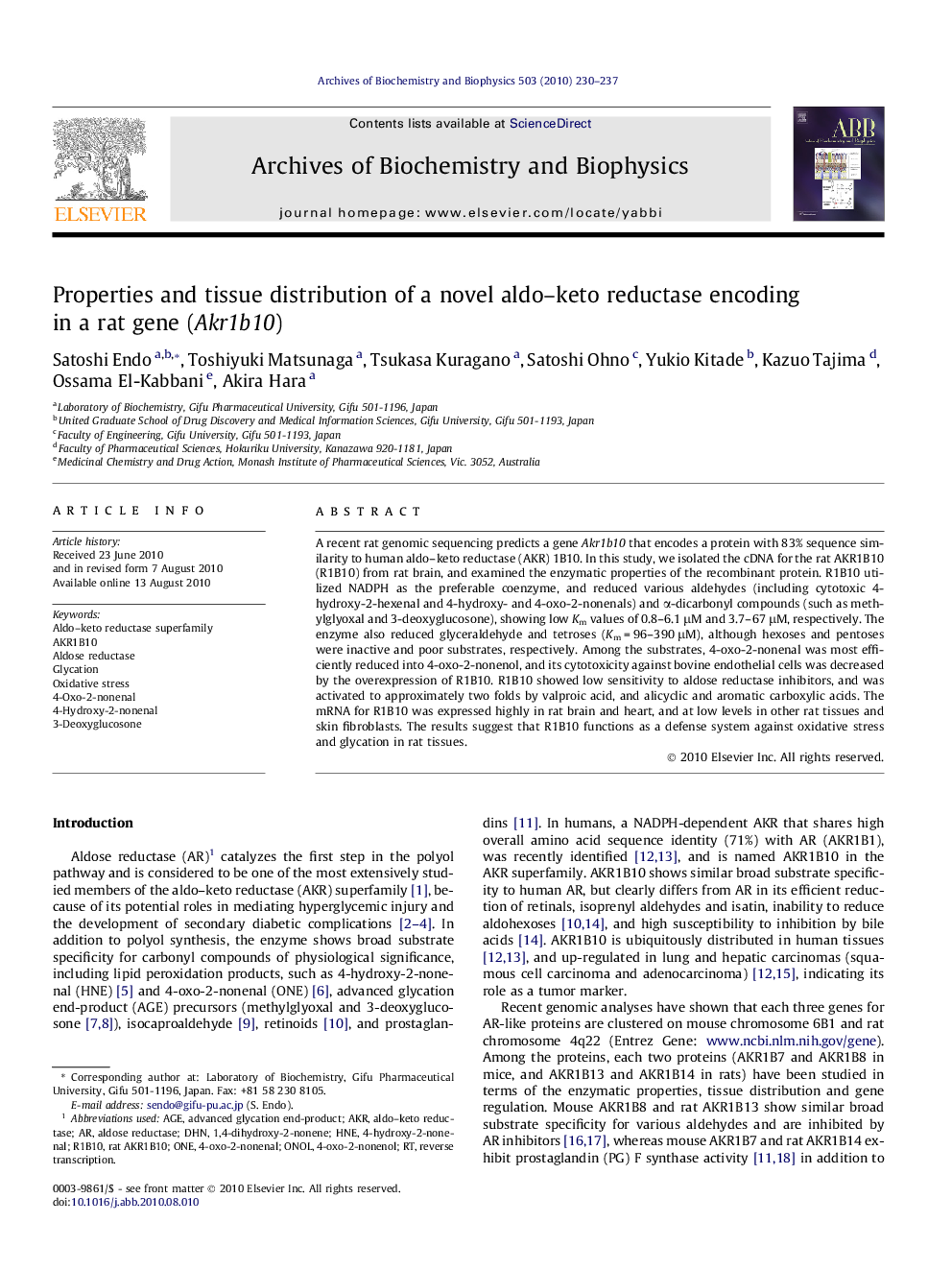| Article ID | Journal | Published Year | Pages | File Type |
|---|---|---|---|---|
| 1925909 | Archives of Biochemistry and Biophysics | 2010 | 8 Pages |
A recent rat genomic sequencing predicts a gene Akr1b10 that encodes a protein with 83% sequence similarity to human aldo–keto reductase (AKR) 1B10. In this study, we isolated the cDNA for the rat AKR1B10 (R1B10) from rat brain, and examined the enzymatic properties of the recombinant protein. R1B10 utilized NADPH as the preferable coenzyme, and reduced various aldehydes (including cytotoxic 4-hydroxy-2-hexenal and 4-hydroxy- and 4-oxo-2-nonenals) and α-dicarbonyl compounds (such as methylglyoxal and 3-deoxyglucosone), showing low Km values of 0.8–6.1 μM and 3.7–67 μM, respectively. The enzyme also reduced glyceraldehyde and tetroses (Km = 96–390 μM), although hexoses and pentoses were inactive and poor substrates, respectively. Among the substrates, 4-oxo-2-nonenal was most efficiently reduced into 4-oxo-2-nonenol, and its cytotoxicity against bovine endothelial cells was decreased by the overexpression of R1B10. R1B10 showed low sensitivity to aldose reductase inhibitors, and was activated to approximately two folds by valproic acid, and alicyclic and aromatic carboxylic acids. The mRNA for R1B10 was expressed highly in rat brain and heart, and at low levels in other rat tissues and skin fibroblasts. The results suggest that R1B10 functions as a defense system against oxidative stress and glycation in rat tissues.
Research highlights► Rat AKR1B10 (R1B10) most efficiently reduced 4-oxo-2-nonenal (ONE). ► ONE-mediated cytotoxicity was decreased by the overexpression of R1B10. ► R1B10 was activated by valproic acid, alicyclic and carboxylic acids.
